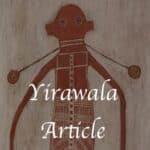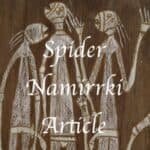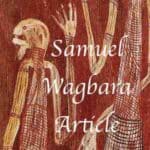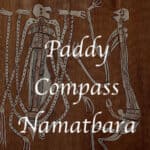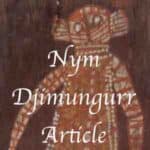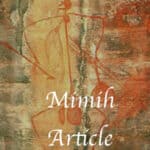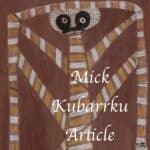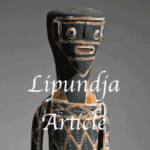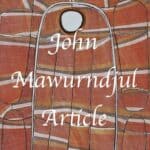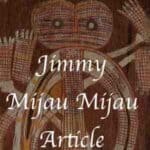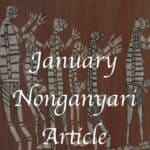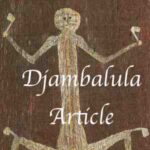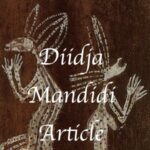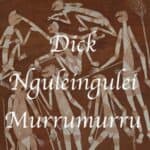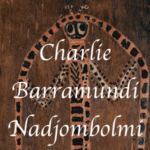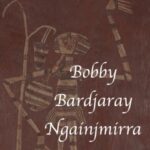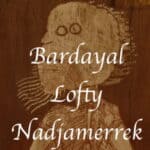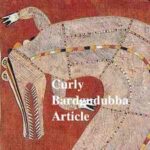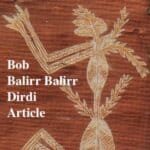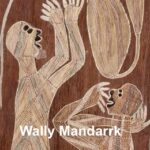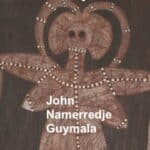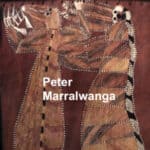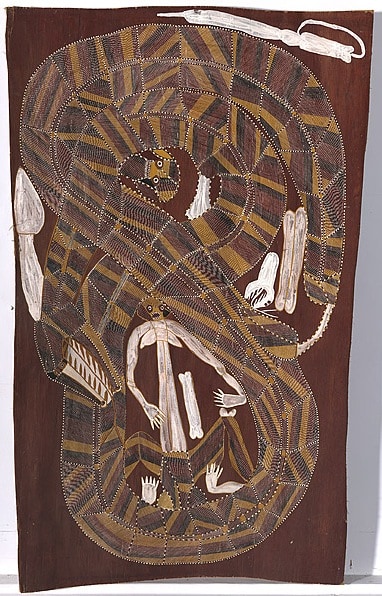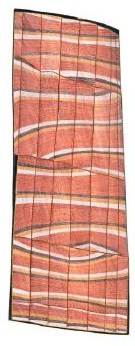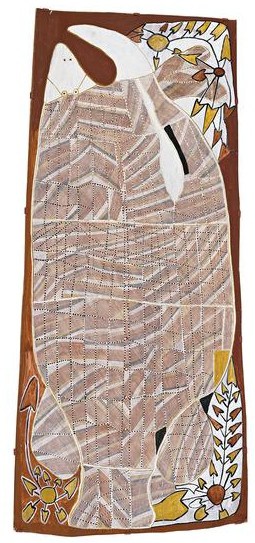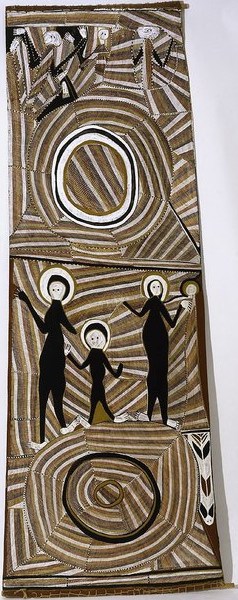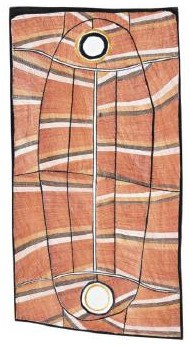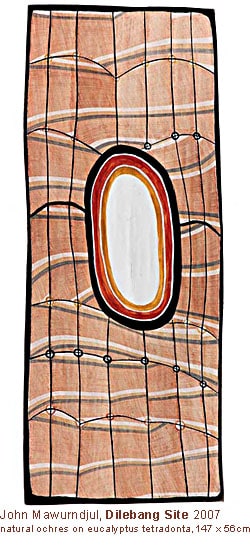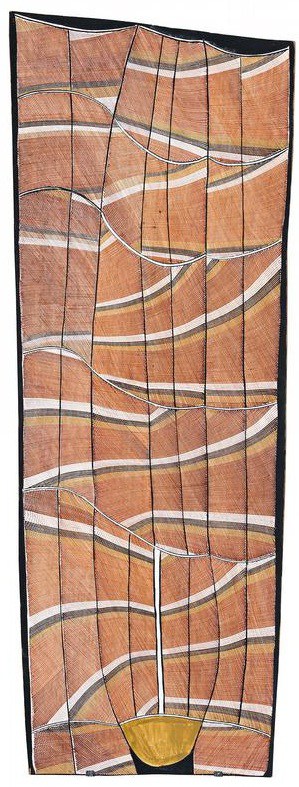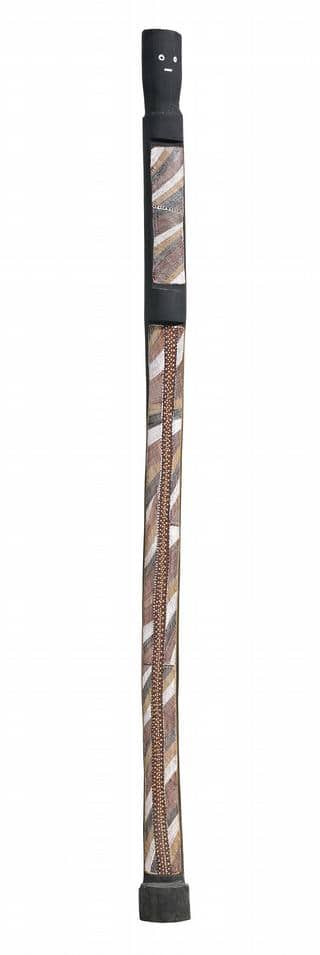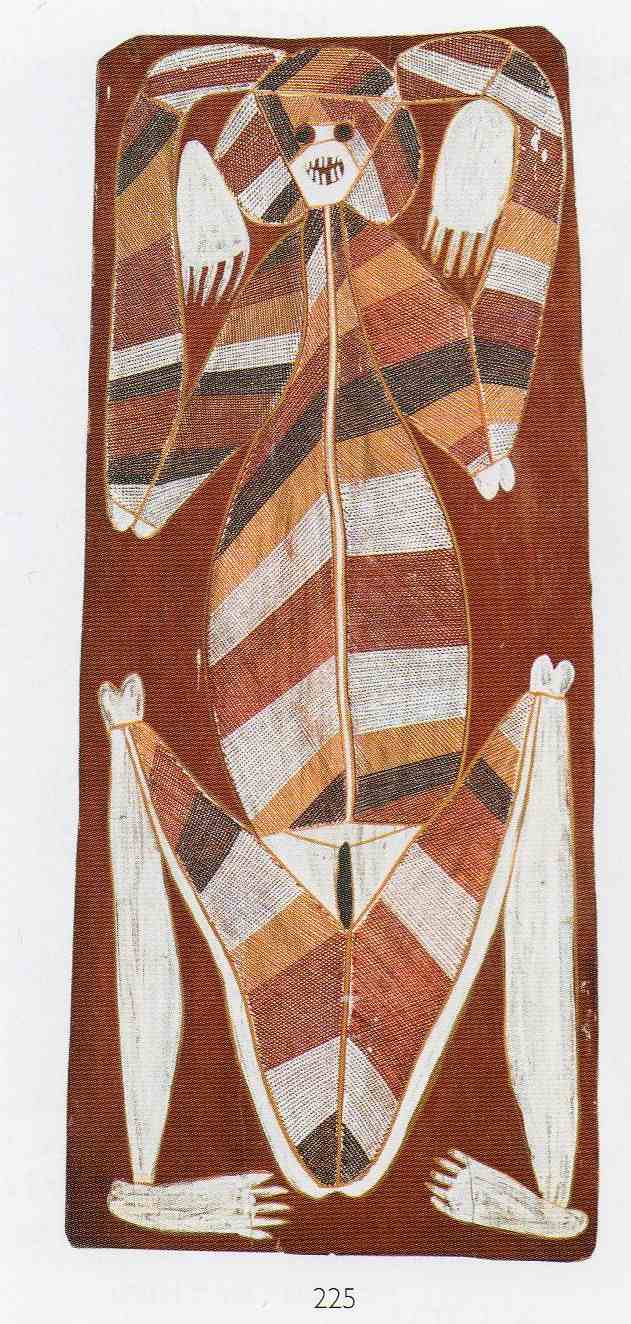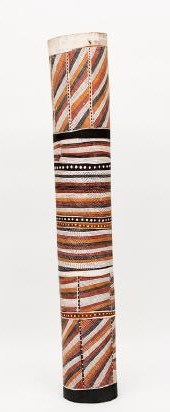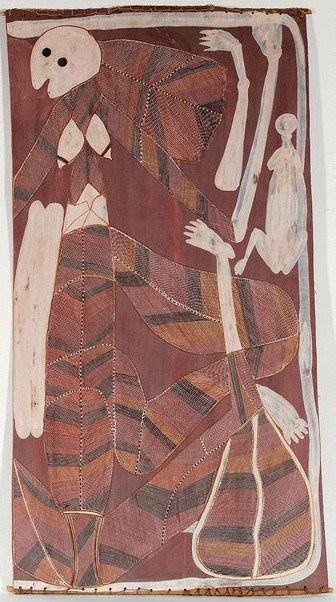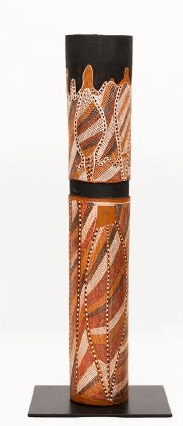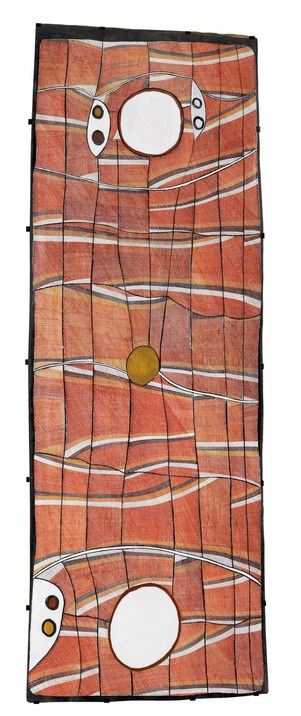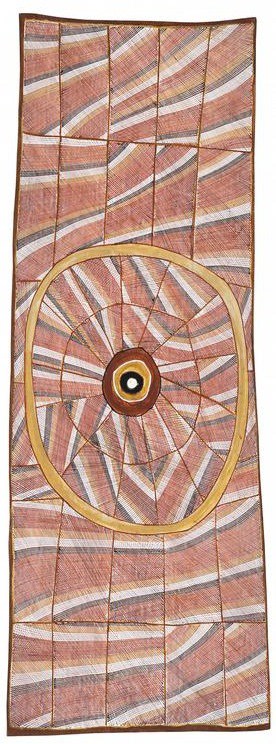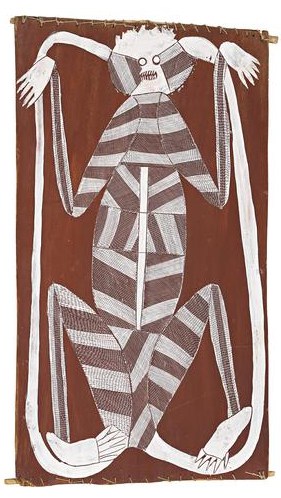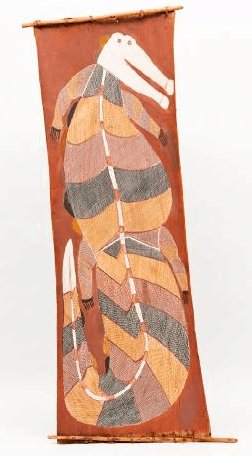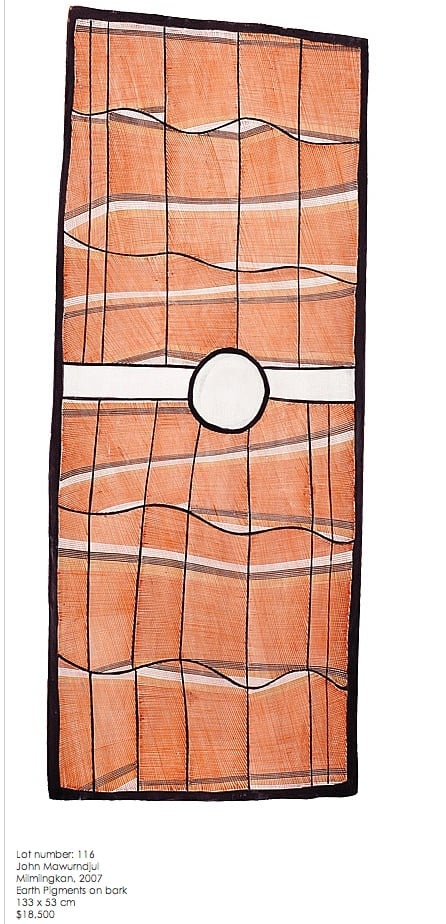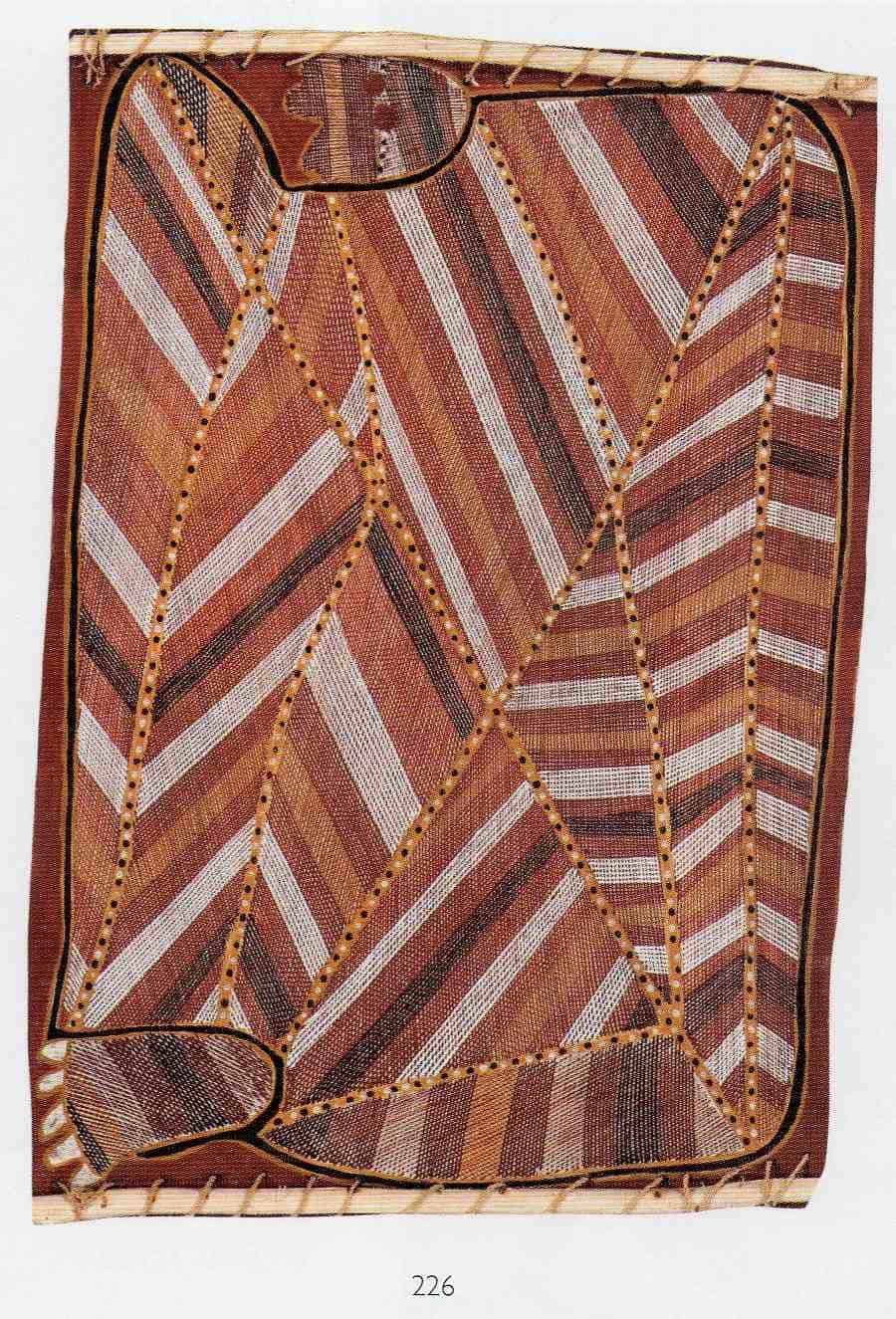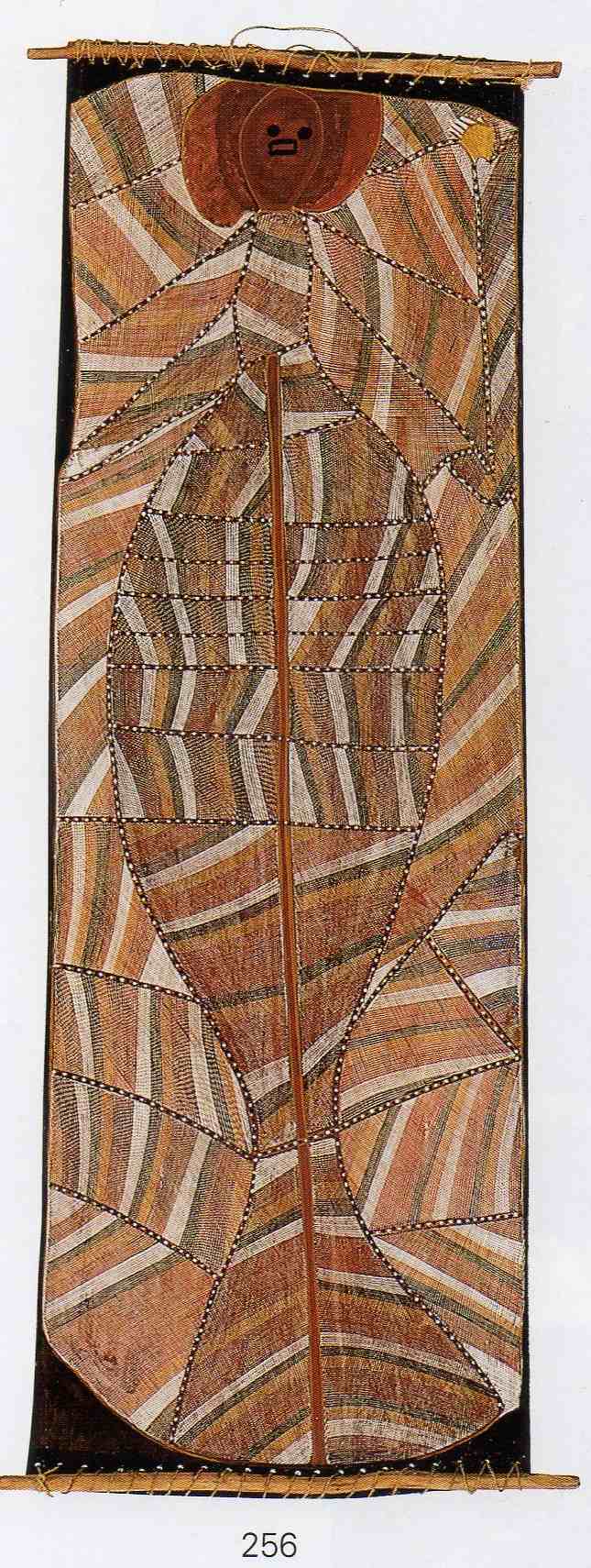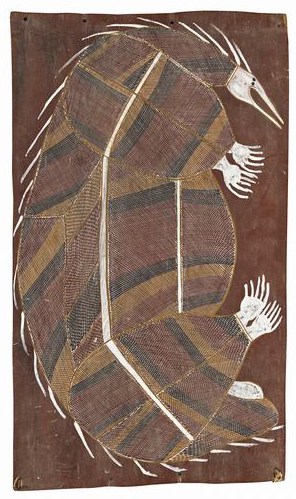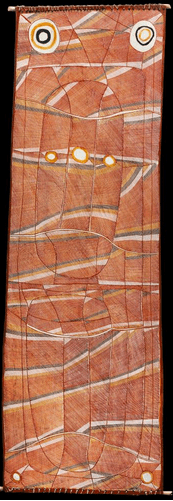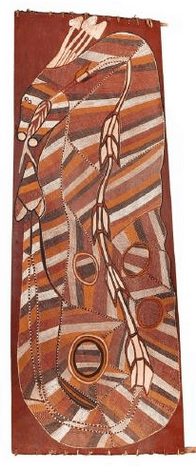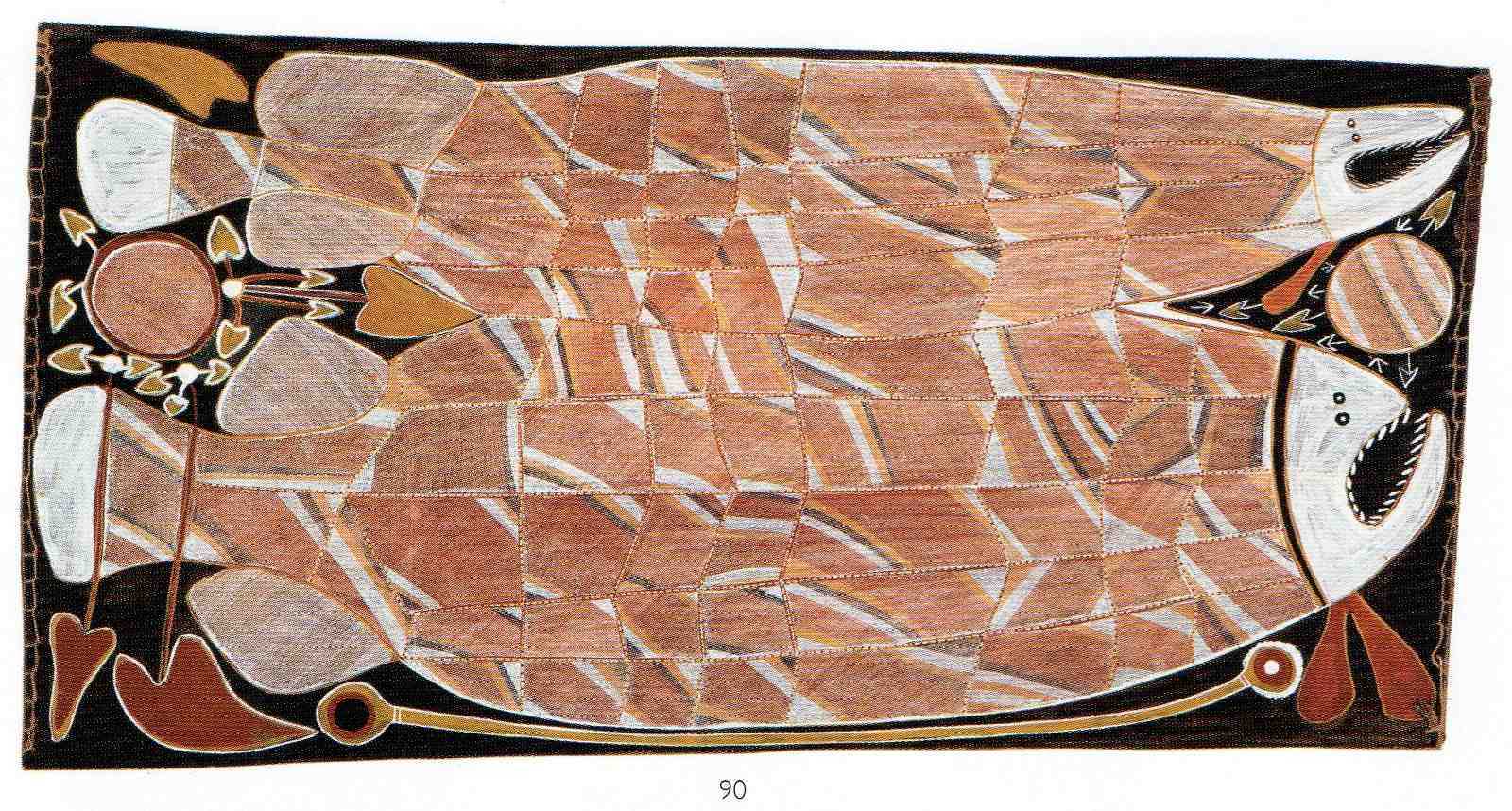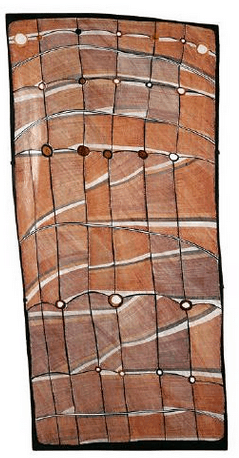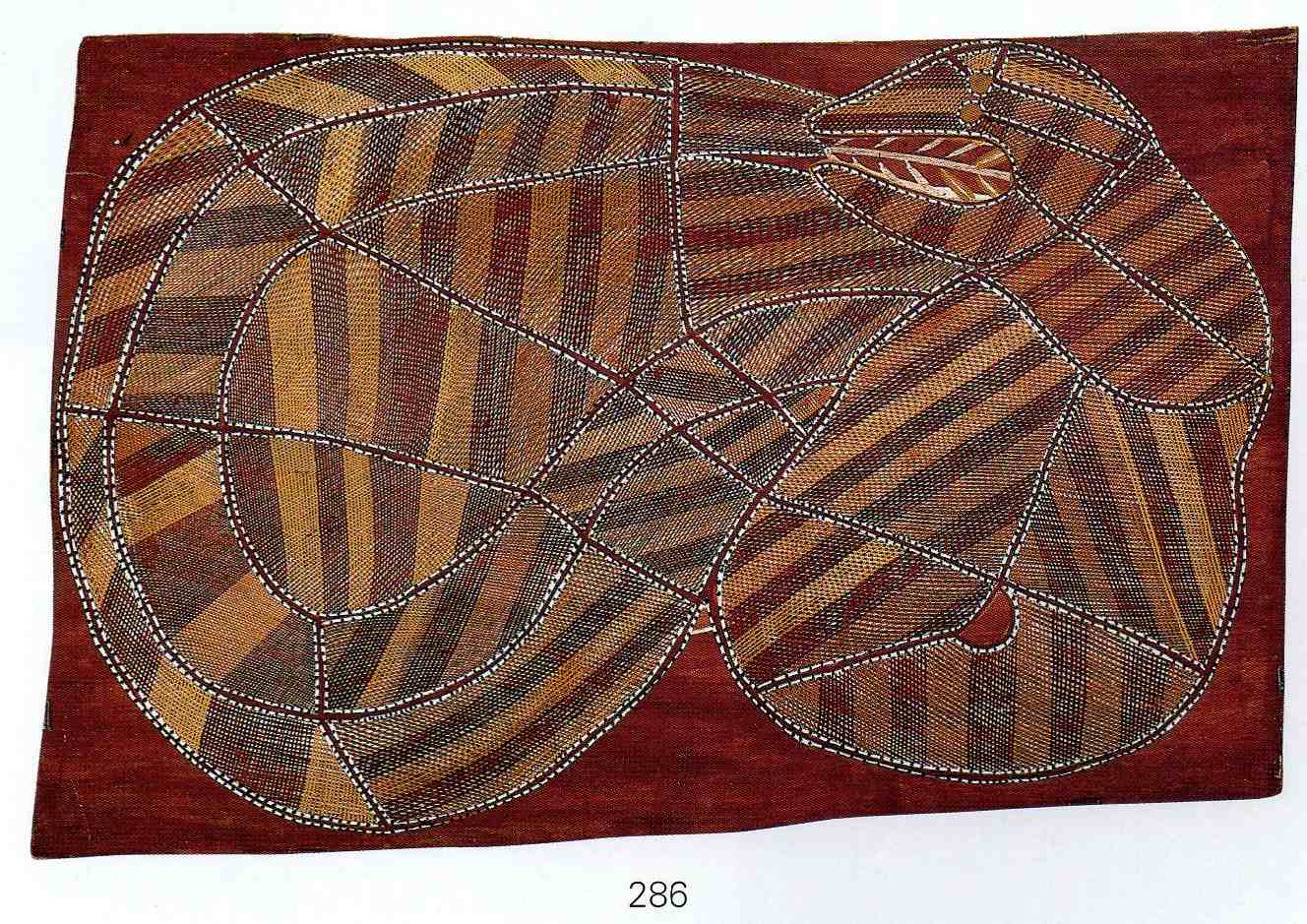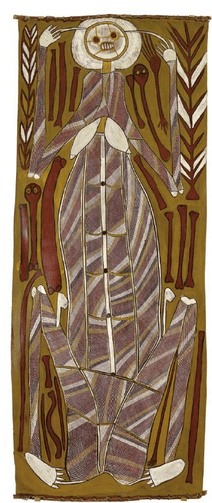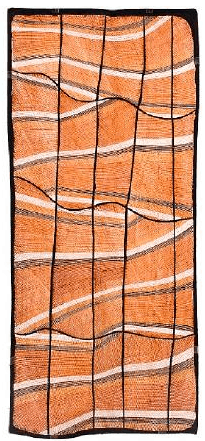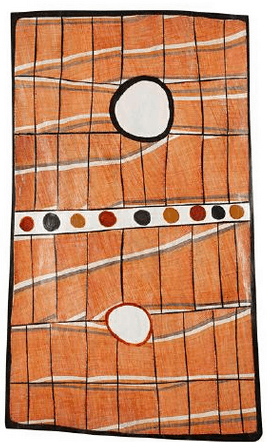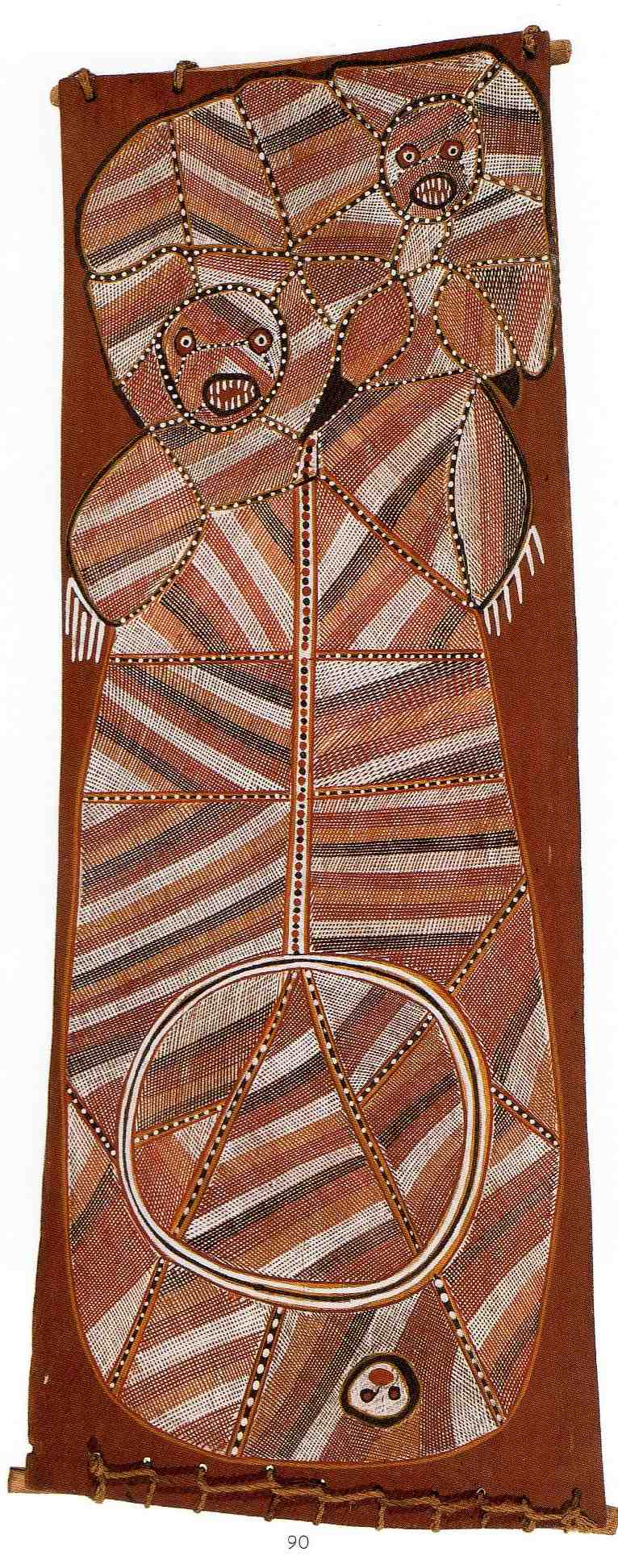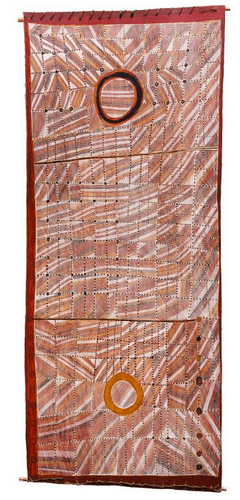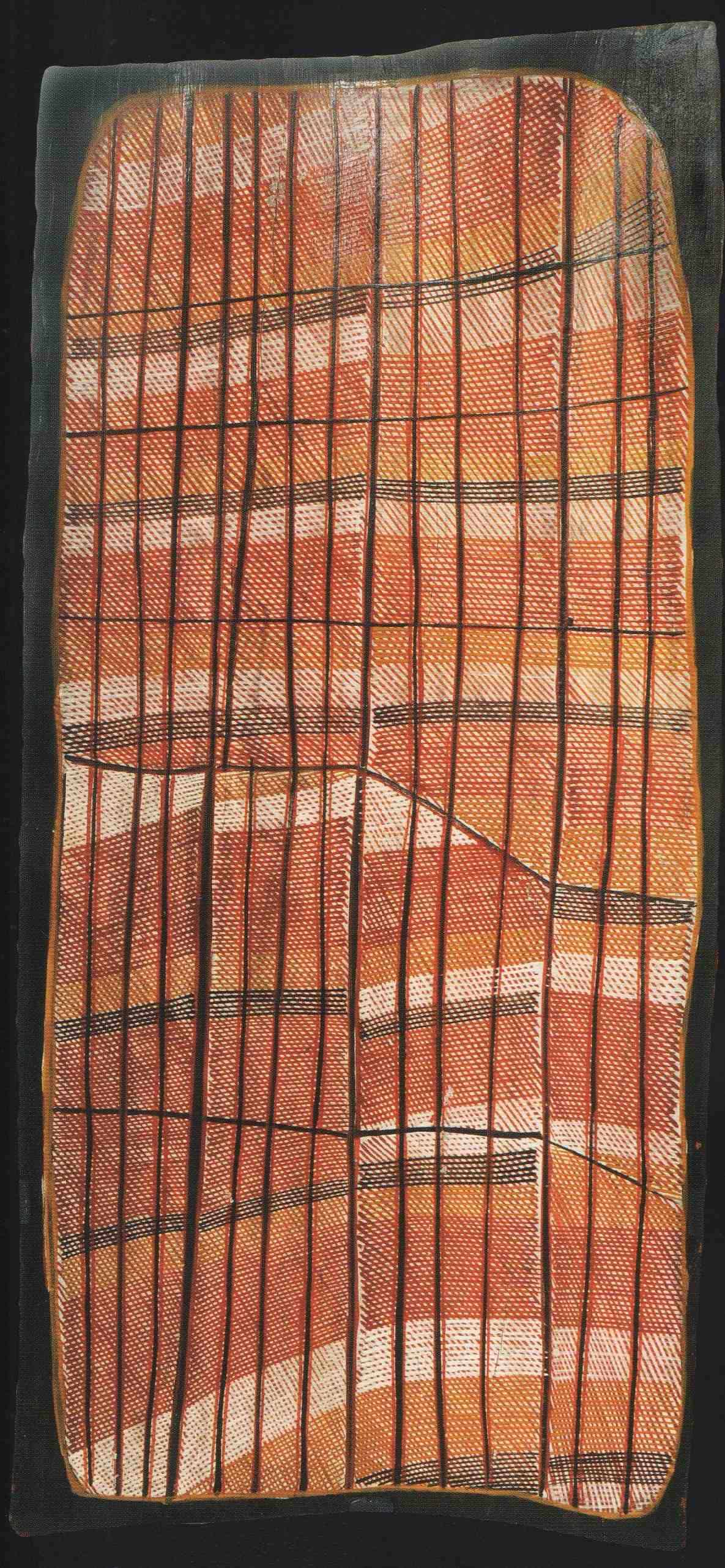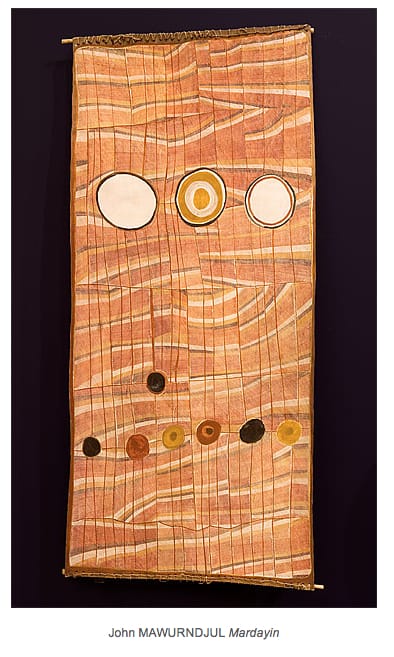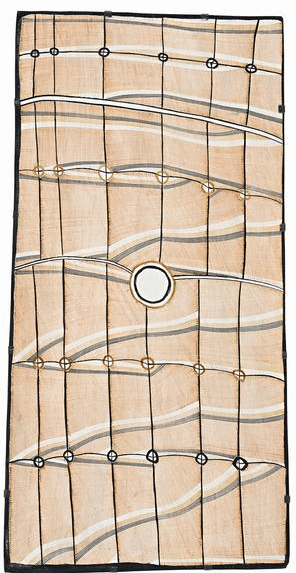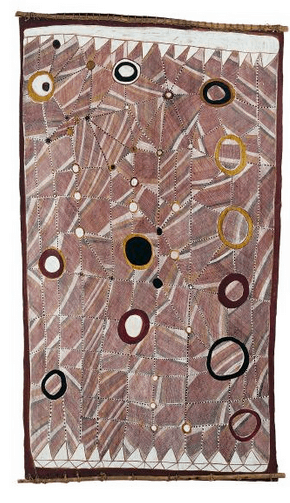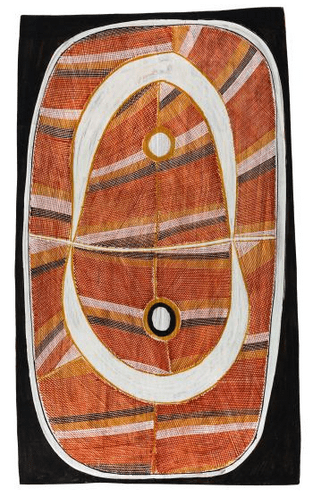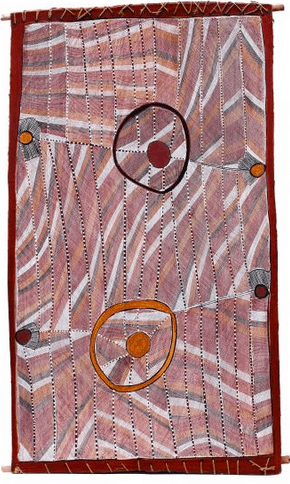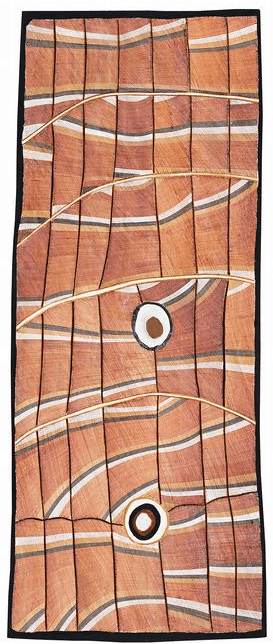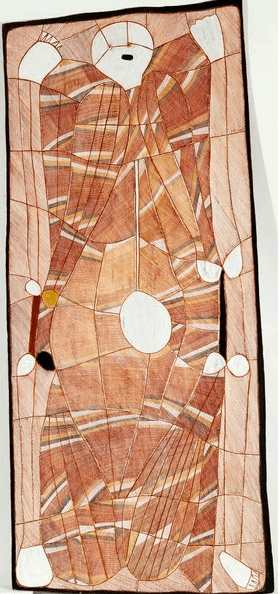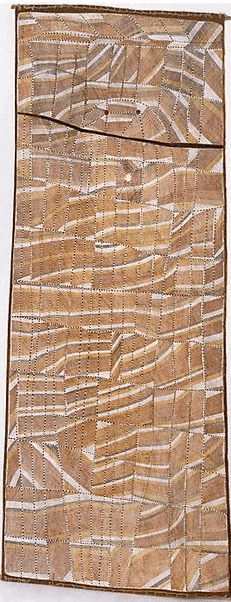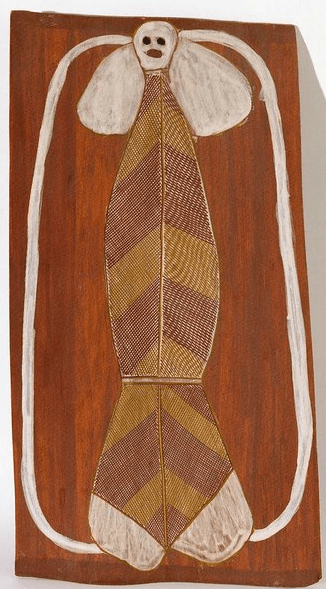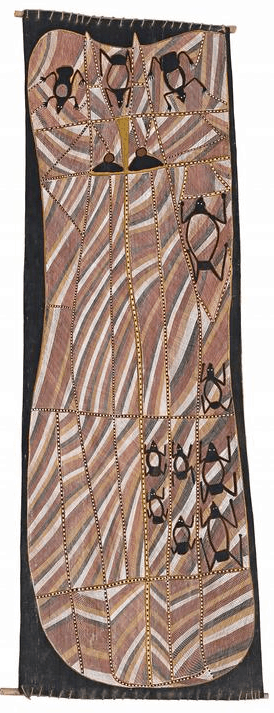John Mawurndjul : Master of the Abstract Bark
John Mawurndjul is an important and prolific Bark Painting Artist from Arnhem Land. He was born in 1952 at Mumeka and is from the Kuninjku people. The aim of this article is to assist readers in identifying if their aboriginal bark painting is by John Mawurndjul. It compares examples of his work.
If you have a John Mawurndjul bark painting to sell please contact me. If you want to know what your bark painting is worth to me please feel free to send me a Jpeg. I would love to see it.
It is Johns abstract bark paintings that are most dynamic and visually intriguing. These are large bark painting is completely covered with rarrk. The raark is sometimes interspersed with circles depicting Arnhem Land ceremonial areas.
His Rarrk is very fine and subtly changes elevation and direction when crossing vertical or horizontal black lines. This results in a visually dynamic composition.
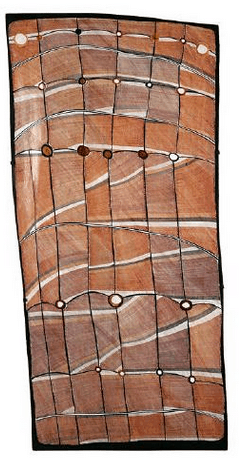
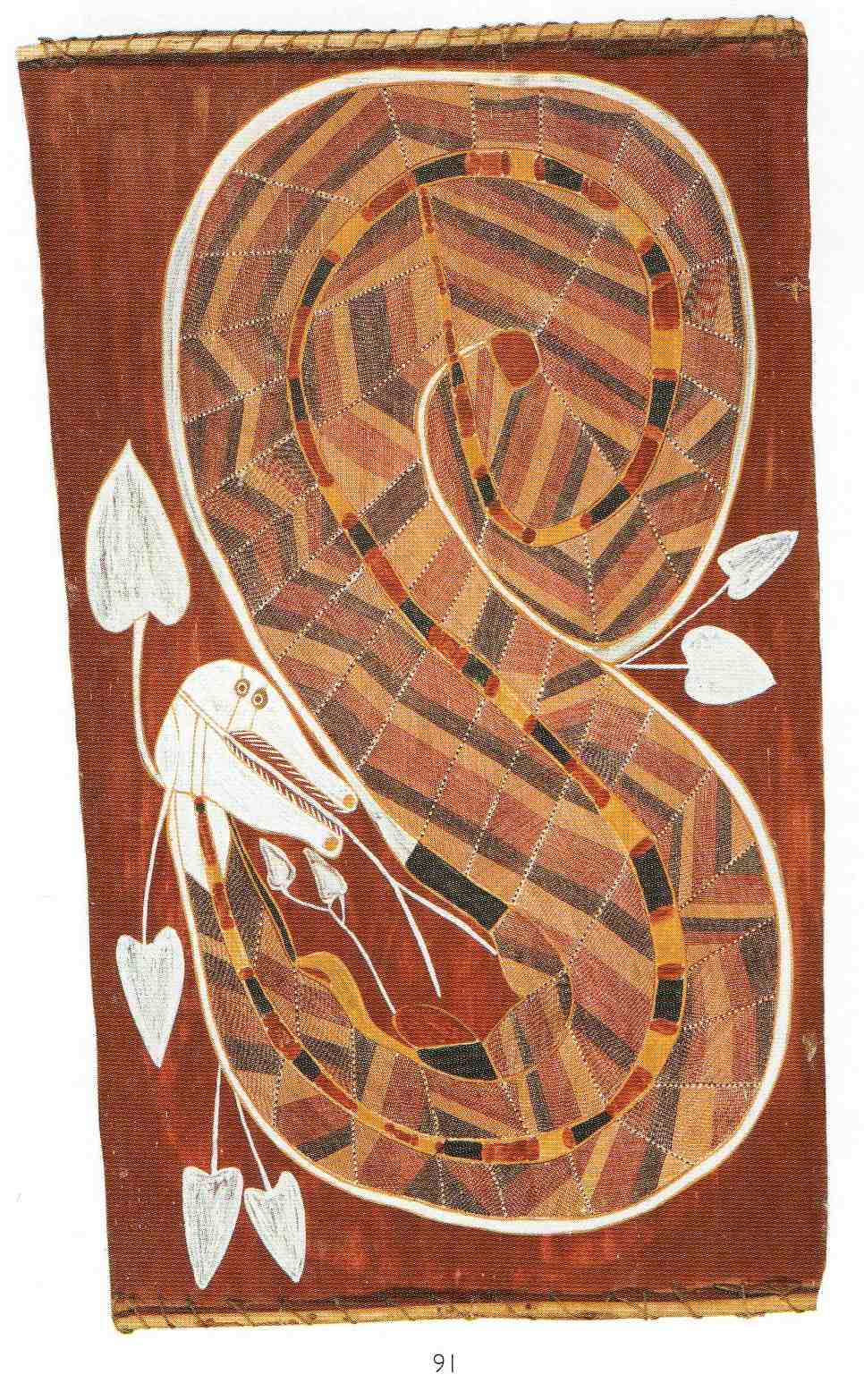
Early Style
John started painting figurative works of Kuninjku mythological creatures and totemic animals. These included the Rainbow Serpent as well as local natural species, such as barramundi, bandicoots, and possum.
Unlike earlier artist from Oenpelli who showed the internal organs in an x-ray style, John used a complex array of cross-hatching. This cross-hatching or ‘rarrk’, derived from the body painting designs of the Mardayin ceremony. He was not the first artist to do this, as it was a common practice of Yirawala and Mick Kubarku.
Mawurndjurl took it a stage further and almost completely abandoned all internal structure of his figures. John was also the first artist in this area to incorporate raark outside of the figures he painted. Traditionally the areas outside of figures are monochrome. John painted the rarrk designs increasingly to dominate. Eventually, it filled both the interior and surrounding space of his figures.
Later Style
In 1988 Mawurndjul abandoned figurative iconography. Instead, he created an abstracted vision of country on Bark completely made of Rarrk. John depicts his clan’s mythology and sacred sites associated Mardayin ceremony.
Yirawala had also done this a couple of times but John’s mastery of rarrk and designs were unique. This was a pioneering move, which several other artists tried to emulate.
Mawurndjul’s art continued to evolve throughout the 1990’s. He simplified and purified his style to create abstract works with a compelling and esoteric geometry. It is these abstract works that are really popular with collectors. Being highly abstract gives them a greater European aesthetic.
Mawurndjul also painted wooden Lorrkon hollow logs. These sculptures are also popular with collectors but it is the design of the paintwork that really determines their value.
Mawurndjul’s first solo exhibition was at Gallery Gabrielle Pizzi in 1993. He has since had four solo shows and been in many art competitions.
He has since gone on to paint the ceiling and pillars of the Musee du Quay Branly in Paris. Art Collector magazine, in 2006, referred to him as ‘the artist of the moment in Australia’ when listing him in its 50 most collectible artists.
John Mawundjul is sometimes spelled John Mawundjul, John Mawurndjurl, John Mawundjurl, John Mowandjul or even Mawandjul.
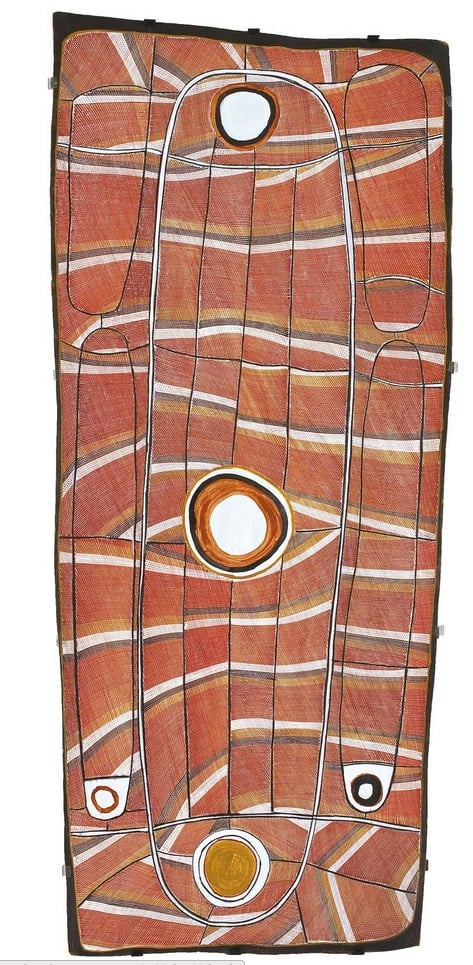
Biography
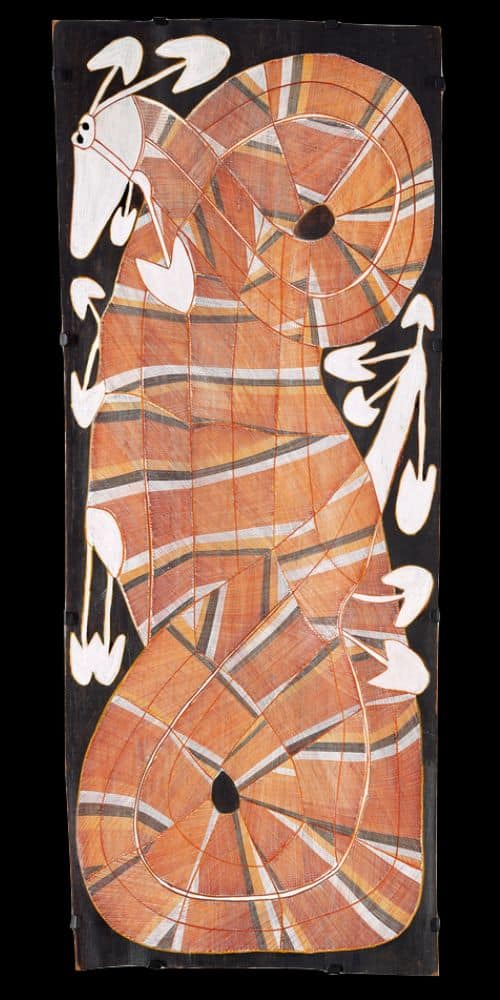
Rainbow Serpent
Aboriginal people believe that Ngalyod, the Rainbow Serpent, created many sacred sites in Arnhem Land. Characteristics of Ngalyod vary from group to group and also depend on the site. He can change into a female serpent, and has both, powers of creation and destruction. Ngalyod is most strongly associated with rain, monsoon seasons, and the rainbows that arc across the sky like a giant serpent. He is most active in the wet season. In the dry season, he rests in billabongs and freshwater springs. When he rests he handles the production of water plants such as waterlilies, vines, algae, and cabbage tree palms.
When waterfalls roar down deep gorges, that Ngalyod is calling out. Large holes in stony banks of rivers and cliff faces are his tracks.
The rainbow serpent is deeply respected because it will swallow people who offend him. If Ngalyod swallows people during floods that he has created, he regurgitates them and they transform into new beings by his blood.
Aboriginal people respect sacred sites where the Rainbow Serpent resides. Near these sites, cooking is not allowed. Cooking near the resting place of the great serpent will incur his wrath. Ngalyod can cause sickness, accidents and great floods, which make it easier for him to swallow his victims.
Although Ngalyod is generally feared throughout Stone Country, he is a friend and protector of the tiny Mimi Spirits.
Other painters of the Rainbow Serpent include Lofty Nadjamerrek, Yirawala and John Namerredje Guymala
Ngarrbek the Echidna
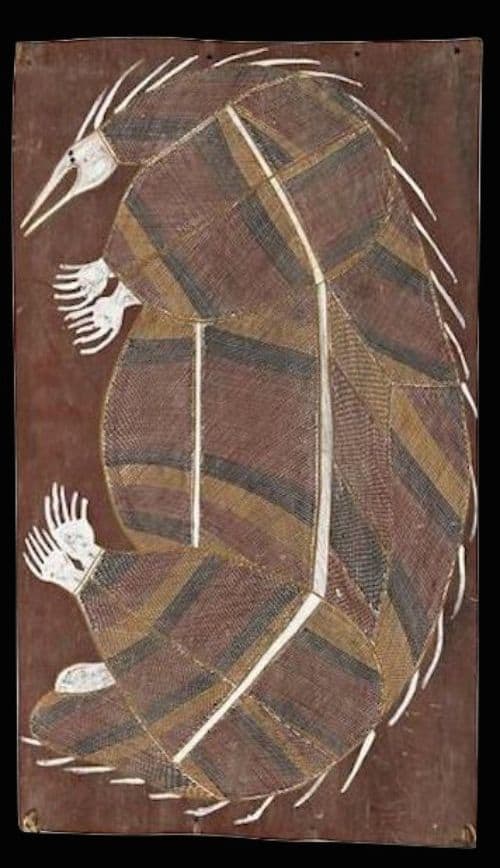
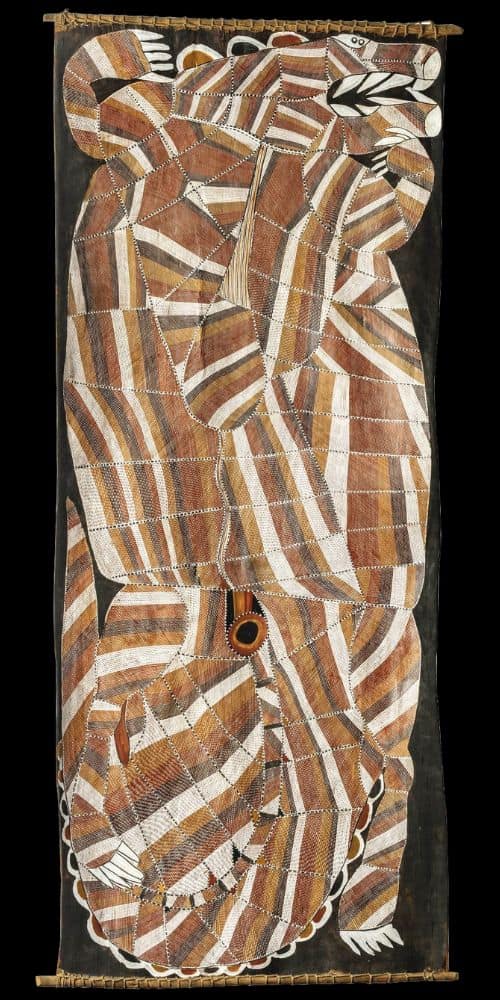
Namanjwarre the Crocodile
Namanjwarre, the saltwater crocodile, Corcodylus porosus. The crocodile totem Namanjwarre is a Yiridja moiety totem.
The estuarine crocodile or Namanjwarre is the protector of the sacred objects of the Mardayin ceremony. The Mardayin ceremony is an important rite of passage for Kuninjku language speakers of Western Arnhem Land. Namanjwarre would devour anyone who transgressed from the correct ceremonial protocol.
The upper Liverpool River and Maragalidban Creek areas had lots of these crocodiles. Crocodiles are rarely killed for food but their eggs are sought after during the wet season when the females are nesting. A major crocodile sacred site exists near the outstation of Kurrindin, in the Liverpool River District.
The treatment of the infill of Namanjwarre is the same used on Mardayin ceremonial objects. Mardayin objects decorated with the same bright patterns of crosshatching and dotted lines. Mardayin objects are secret and sacred. The use of the same design within the crocodile, thus, shows the interconnection of the crocodile and the Mardayin ceremony.
Namanjwarre is an important totem and is danced in the sacred and secret ritual of the Mardayin ceremony.
All images in this article are for educational purposes only.
This site may contain copyrighted material the use of which was not specified by the copyright owner.
Western Arnhem land Artists and Artworks
John Mawurndjul Bark Painting Images
The following are images are not a complete list of works by the artist but give a good idea of the style and variety of the artist.

